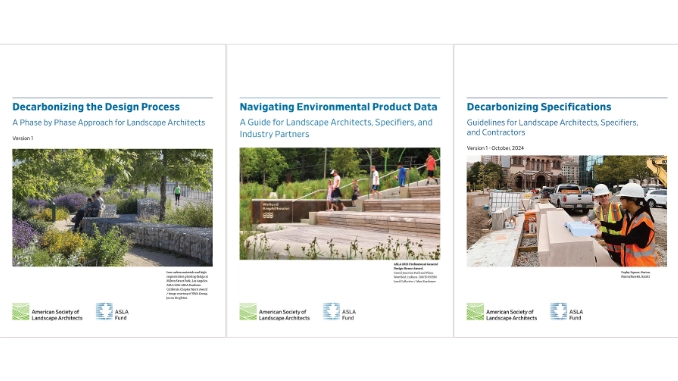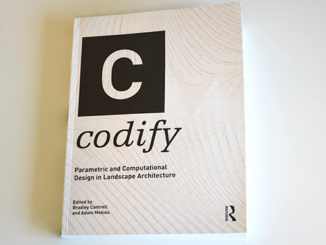
ASLA has released a set of decarbonizing guides designed to help landscape architects, specifiers, and industry partners achieve the goals of the ASLA Climate Action Plan, which includes making the profession zero-emission by 2040.
The resources were developed by the ASLA Biodiversity and Climate Action Committee, a group of landscape architects charged with implementing key aspects of the plan, including how to decarbonize projects while increasing biodiversity. Landscape architects play an important role in designing nature-based solutions to climate change that also help communities become more resilient.
“These guides are the practical tools landscape architects have been asking for. They help turn every project into an opportunity to get on a path to zero emissions,” said ASLA CEO Torey Carter-Conneen. “They take our high-level goals and break it down for everyone – showing landscape architects and industry partners how to get there, step by step.”
“With climate impacts only worsening, we know we need to change how we design – and make that shift faster,” said April Phillips, FASLA, Chair of the ASLA Biodiversity and Climate Action Committee. “So we got to work, creating substantive how-to’s any landscape architect, specifier, or industry partner can pick up and start using today.”
New resources include:
Decarbonizing Specifications
Guidelines for Landscape Architects, Specifiers, and Contractors
Decarbonizing the Design Process
A Phase by Phase Approach for Landscape Architects
Navigating Environmental Product Data
A Guide for Landscape Architects, Specifiers, and Industry Partners
These new resources are what ASLA members and industry partners stated they needed in survey responses gathered over the past two years.
The guides are designed for the broad landscape architecture community, including:
- Landscape architects
- Landscape designers
- Other specifiers
- Industry partners that develop the products and services used in landscape architecture projects
The best practices in the guides can also inform the work of planners, architects, engineers, and urban designers.


